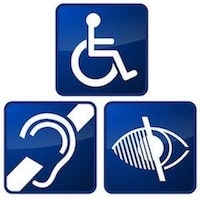Both breath test machine utilize an infrared spectrophotometer. The EC/IR II relies on an Electrochemical Fuel Cell “EC” for determining the BrAC or Breath Alcohol Content. The IR reading is used to determine the existence of residual mouth alcohol. Both machines attempt to measure the amount of ethanol (alcohol) in a person’s body. One of the issues with both machines is that they use an assumption ratio when they calculates the amount of alcohol in a person’s blood. This is because they both measure how much alcohol is in a person’s breath and assumes that whatever amount found on your breath is in your blood, which is not always the case. For example, if you suffer from GERD, you may have a constant flow of alcoholic gas from your stomach. Testing machinery isn’t always accurate in differentiating between substances detected via Breath Alcohol Content (BrAC) that may be cumulative in nature. For example, studies have been published that indicate a possibility of undetected residual mouth alcohol, upper respiratory track and esophageal surface alcohol combining with an alveolar sample, sometimes called a combinative reading.
What Happens in Drunk Driving Fatality Cases? Another problem with the EC/IR II and Intoxilyzer 5000 is that they are both machines, which means they must be maintained and calibrated to be in proper working order. In addition, the officer who administered your breath test must have been trained on how to properly use that machine. Indeed only a duly authorized Licensed Chemical Analyst may testify in Court about breath test results.
Another problem with the EC/IR II and Intoxilyzer 5000 is that they are both machines, which means they must be maintained and calibrated to be in proper working order. In addition, the officer who administered your breath test must have been trained on how to properly use that machine. Indeed only a duly authorized Licensed Chemical Analyst may testify in Court about breath test results.
So if you were given a breath test and were arrested for DWI in North Carolina, remember to call DWI defense attorney Bill Powers right away. The sooner he can get started on your case, the better.
CALL NOW FOR A FREE, CONFIDENTIAL CONSULTATION
704-342-4357 Get a Free Case Evaluation Right Now!
Modified Transcript of “Breath Testing Machines in North Carolina” for the Hearing Impaired  Hi I’m Bill Powers, and I want to thank you for checking out our website. You’ve obviously gotten to this page and you’re probably looking for driving while impaired, DUI, DWI type of offenses. And I would encourage you to watch our other videos, check out our other materials, maybe check out one of our SlideShares on the North Carolina DWI Quick Reference Guide, which will be a link here on the website. Sometimes people … and this particular page is called the Intoxilyzer 5000, that’s actually the name of the device that we used to use.
Hi I’m Bill Powers, and I want to thank you for checking out our website. You’ve obviously gotten to this page and you’re probably looking for driving while impaired, DUI, DWI type of offenses. And I would encourage you to watch our other videos, check out our other materials, maybe check out one of our SlideShares on the North Carolina DWI Quick Reference Guide, which will be a link here on the website. Sometimes people … and this particular page is called the Intoxilyzer 5000, that’s actually the name of the device that we used to use.
And it brings up a good point because the device that we’re using now, the machine that we’re using now for an evidentiary standard as a practical matter, and there are other approved devices and these laws change by the way, but the device we’re using now is called the Intoximeter ECIR II. EC standing for electrochemical, IR standing for infared and two, well roman number two, cause it’s the second model unit, or whatever. The older device was known as the Intoxilyzer. And it was made by a company called CMI, the ECIR is made by Intoximeters, that’s the name of their company, who actually owns now, I think, one of the other devices and they seem to be, kind of, gathering all the different devices and managing their use in different states. Realize that not all states use the same devices.
Anyway, Intoximeter, Intoxylizer, Breathalyzer, which is the old term made by Smith and Weston, yeah it’s the same company who makes the guns, while we may as a culture use those terms interchangeably, they’re technically different types of devices, and they use technically different methodologies or ways of testing for alcohol. Now, these devices that you blow into, blow through too, do not test your blood. They are meant to determine through They are meant to determine through extrapolation the amount of alcohol in your bloodstream vis-a-vis what comes out of the bloodstream through your lungs out your gullet and into this tube and into the machine. You’ll hear people refer to … Law enforcement refer to it as BAC, blood alcohol content, when that’s not quite accurate. The only way to get a blood alcohol content reading is needle-in-the-arm blood. What you’re really getting is BR, breath AC, which is breath alcohol content, and there are certain scientific principles that we use to try to work our way back down, where we say for this amount of liquid blood is the functional equivalent of these amount of alcohol particles in the air of your breath.
We’re extrapolating from BRAC down to BAC. We talk about things called partition ratio, that ratio of liquid to breath, 2100 to one. We talk about Boyle’s Law. We talk about the exchange of gases in open and closed systems, in standard temperatures, in standard pressures. If you’re interested in any of this, we got a bunch of this content on the website. We have a lot of papers on it and presentations we’ve made over the years. Long and short of it is, is that the breathalyzer use light to shine through a breath sample, and it measured the colors or wavelengths of light, for lack of a better term. There’s these little ampules that are kind of yellow in color. That’s how they try to figure out how much alcohol was in your breath, and extrapolate how much was in your blood from that.
Then, the Intoxilyzer 5000 came around, and Intoxilyzer 5000 used infrared. It was a cylinder, about the size of a … Maybe a hand towel, paper towel roll. It had a light bulb on one end. It had a wheel on the side. They called it a chopper wheel, and it had different shades of filters on it. It would measure wavelengths of energy. You blow into this device, they’d shine up infrared light through it. They would measure the light with a receptor, like electric eye. I’m using very big, gross macro type of terms for purposes of explanation, but they would measure the light going through unimpeded. They’d come up with a number, and then they’d blow your breath in there and alcohol, the substance of ethanol, ethyl alcohol, they’re the same thing, would absorb a certain amount of the energy of the light. Thereby, they were looking at three different areas and they’d be able to determine the concentration of alcohol in your breath again.
Fast forward to … Oh, gracious. We’ve probably been using it 10 years or more now. The EC/IR II, which uses IR infrared, what I just talked about, and the EC, which is electrochemical. It’s electrochemical fuel cell. Very similar to the fuel cells that we use on a handheld device on the side of the road, and even the bracelets on the ankle. I’ve got to stop pointing to my wrist when I talk about ankle, but I think of it as a watch of sorts. Now, for evidentiary purposes, the EC/IR II is the one we see in North Carolina. Now, that numerical value that’s pumped out on little piece of paper, the skinny sheet of paper, it comes from the fuel cell reading. It does have infrared in it, but it doesn’t necessarily, so we’re told. We’ve tried to get the source code on this, but we haven’t been able to. But we’re told that the infrared aspect of the EC/IR II, the IR portion of it is just measuring for mouth alcohol and to confirm that there is a good, clean reading as opposed to the alcohol coming from something else other than your lungs.
It’s really complicated. It’s something a little bit dorky like me that enjoys the science behind it. I enjoy the science behind knowing the ethanol molecule and how the hydrogen reacts to the fuel cells and all of that. Sometimes it’s relevant. Sometimes it comes into play in DWI cases. Sometimes it doesn’t. The state of North Carolina, in my opinion, is technically, or has purposely made challenging the breath testing devices very difficult. There are defenses to it, but it’s very, very complicated. It’s very, very, difficult and it takes a lot of work. I don’t think people realize the level of science that we’re getting down to, where we’re literally talking about molecular levels and atoms and how the sensors pick up things and measure things and to decide what’s an accurate read or not.
Give us a call, 704-342-4357. Heck, if you want to take a look at the machines, I got all of them here. You can take a look around and I’ll show you what the old-fashioned breathalyzer looks like versus the EC/IR II and the Intoxilyzer and even the other devices that other states use. It gives you a good framework and understanding of the science and the law and the technology, which DWIs are, I like to say, a perfect storm. Telephone number, 704-342-4357, and I look forward to hearing from you.
Helpful Information About Criminal Charges  Powers Law Firm PA Home
Powers Law Firm PA Home














 Another problem with the EC/IR II and Intoxilyzer 5000 is that they are both machines, which means they must be maintained and calibrated to be in proper working order. In addition, the officer who administered your breath test must have been trained on how to properly use that machine. Indeed only a duly authorized
Another problem with the EC/IR II and Intoxilyzer 5000 is that they are both machines, which means they must be maintained and calibrated to be in proper working order. In addition, the officer who administered your breath test must have been trained on how to properly use that machine. Indeed only a duly authorized 





